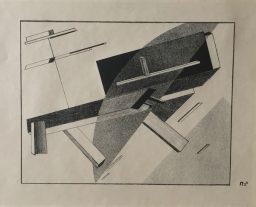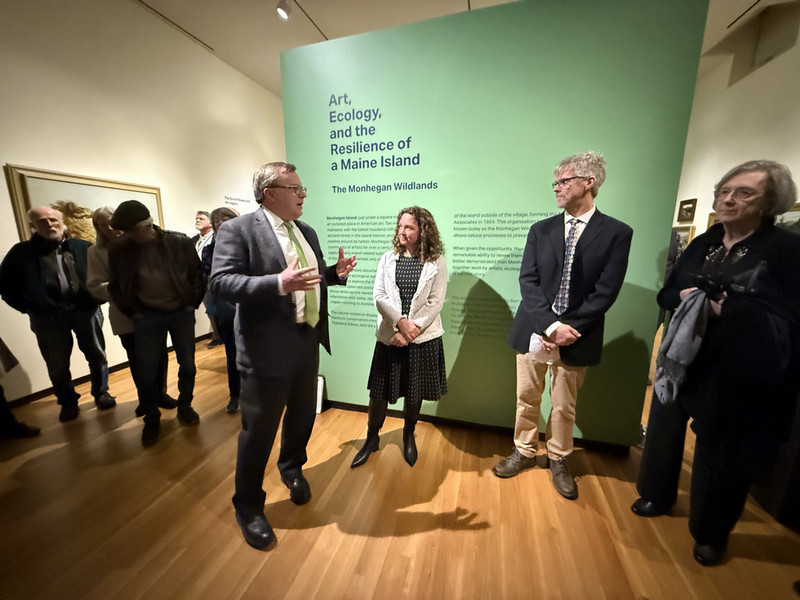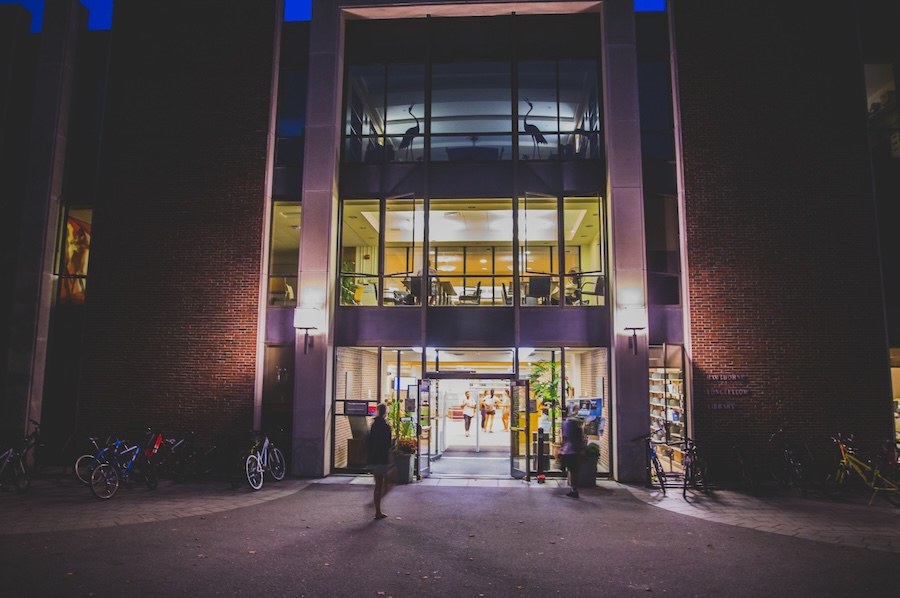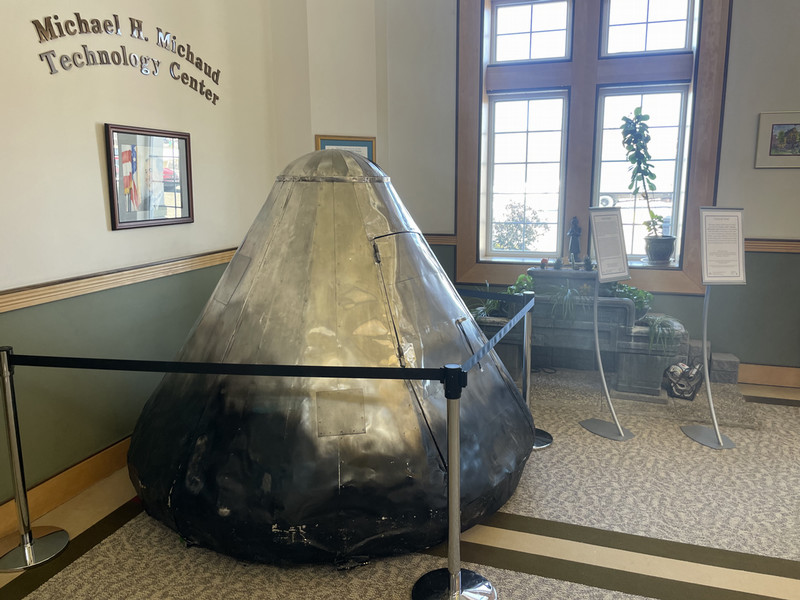A rare lithograph from the Russian Avant-garde comes to Bowdoin: El Lissitzky’s abstract work staged an artistic revolution
By Bowdoin College Museum of Art
The Museum proudly announces the acquisition of a rare lithograph, Proun 2B, by El Lissitzky, a key member of the Russian Avant-garde. El Lissitzky invented the Proun (pronounced Pro-oon) in Vitebsk in the autumn of 1919, at the height of the Russian revolution, where the young architect and illustrator taught printmaking and architecture at a “people’s art school” under the direction of Kazimir Malevich. Since about 1913, Malevich had developed Suprematism, an artistic philosophy that became foundational for geometric abstraction in twentieth century art. By applying his skills in architectural drawing, El Lissitzky transformed Malevich’s dynamic pictorial language of flat, monochromatic shapes into a vision of geometric shapes that seem to float in a cosmic space unhampered by gravity or pictorial conventions. The neologism Proun is an acronym for “Project of the Affirmation of the New,” a proposition that the artist advanced in lectures, essays, and exhibitions, as well as in his art. El Lissitzky’s utopian art intended to dismantle conventional notions of space and matter and instead create a sense of unlimited potential—a timely contribution to the political revolution underway since 1917. However, El Lissitzky’s romantic vision of creativity as a unifying force for the betterment of humanity did not find the approval of his politically radicalized colleagues. In 1921, Marxist revolutionary artists formed the Constructivist movement, insisting that their creative contributions were a form of labor, just like the workers’, and should serve the collective. They demanded that artists abandon the “bourgeois” fine arts altogether and apply their skills to industrial design and propaganda efforts.
Proun 2B is a powerful example of the art of the Russian revolution at the moment of its greatest ambition. It is a major achievement in the field of printmaking with far-reaching implications for modern art, architecture, political history, and the aesthetic discourse of the twentieth century. El Lissitzky’s invention of the Proun is inherently interdisciplinary. He wrote explicitly about mathematics, biology, and engineering in their relationship to the Proun. This work is well suited to engage Bowdoin faculty and students across academic disciplines.
El Lissitzky’s own work was multi-facetted. As one of the most innovative artists of the Russian avant-garde, he left a legacy in his visual art, architectural designs, graphic design, photography, and in his writings. El Lissitzky was born in Smolensk into a Jewish family. He studied architecture in Germany before researching historic synagogues in Central Europe and illustrating Jewish folklore for children. As a close friend first of Marc Chagall and then of Kasimir Malevich at UNOVIS, the art school of Vitebsk, and as teacher at Moscow’s VKhUTEMAS school, Lissitzky was positioned at the core of revolutionary efforts in the arts. An extended stay in Germany in the 1920s made him a prominent spokespeople for the Russian avant-garde in the West, especially through his design for major exhibitions sponsored by the Soviet Union. After his return to Moscow, El Lissitzky designed magazines such as USSR in Constructions and other publications that showcased Soviet progress for Western audiences. El Lissitzky died of tuberculosis in 1941.



